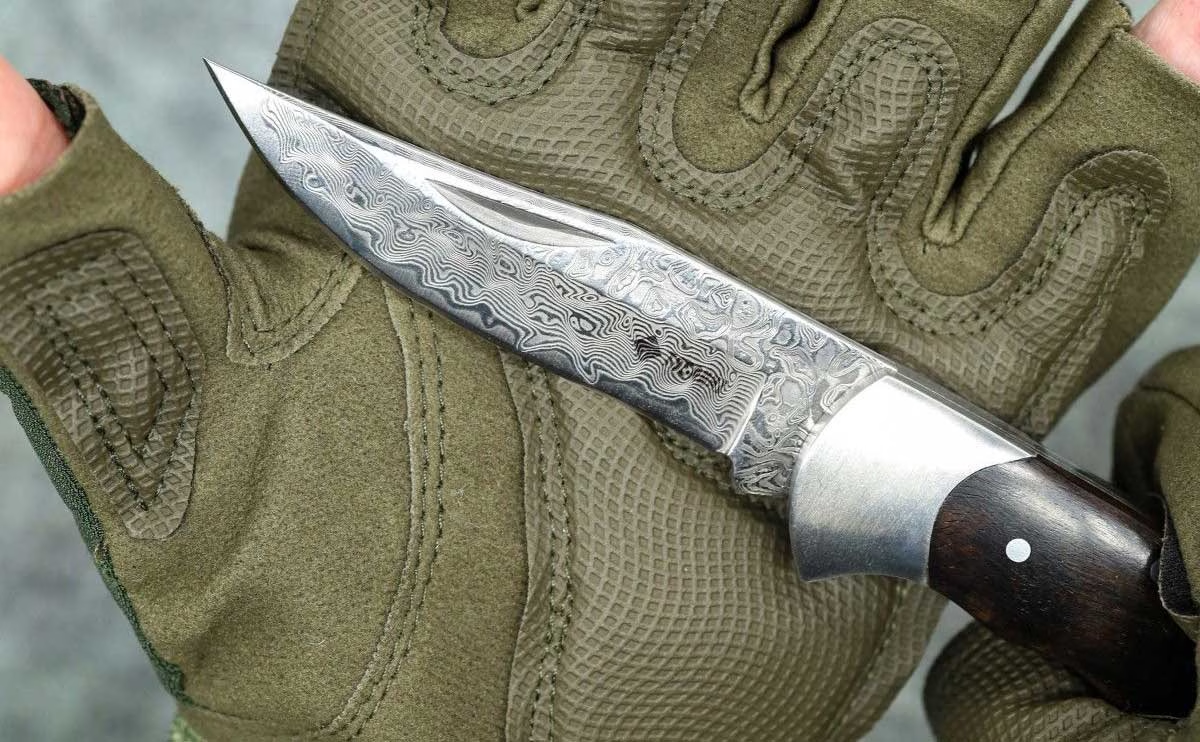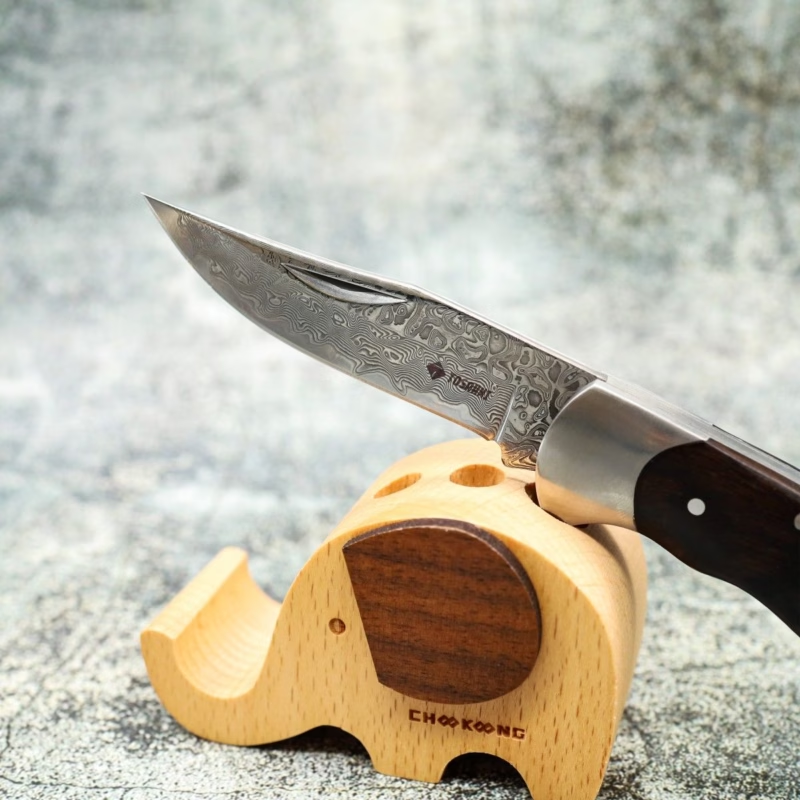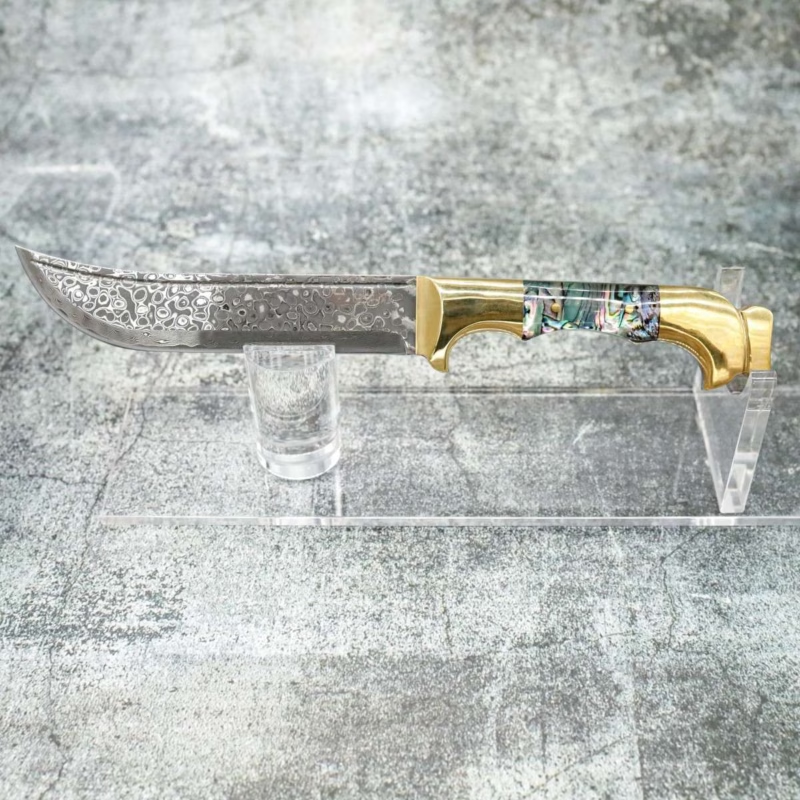The Clip Point Blade: Design, Applications, and Benefits Explained

The clip point blade is a time-honored and widely recognized design in the world of cutlery. Its unique profile, characterized by a “clipped” spine near the tip, provides specific performance attributes that continue to make it a popular choice for various applications. This versatile blade design has remained a favorite for hunters, everyday carry (EDC) enthusiasts, and tactical users, making it an essential tool for a wide range of cutting tasks.
What is a Clip Point Blade?
A clip point blade is defined by the distinct “clip” or cut-away section on its spine, typically starting one-third or one-fourth of the way from the tip. This results in a sharp, controllable point that excels in precision and piercing. The clip can be either a straight line or a concave curve, each influencing the final geometry of the blade’s tip. These variations offer subtle differences in how the blade performs in various tasks such as piercing, slicing, and cutting.

Spine Profile and the “Clip”
The most distinctive feature of the clip point blade is its clipped spine. Unlike other blade shapes that have a gradual curve, the clip point features an abrupt angle, creating a thin, sharp tip. This profile allows the blade to penetrate deeply and quickly, making it ideal for tasks that require high control and precision.
Key Advantages of Clip Point Blades
The clip point blade offers numerous advantages, particularly for tasks that require precision and control:
Piercing Ability
The thin, sharp tip of the clip point blade is perfect for piercing through tough materials. The acute point makes it particularly useful for tasks that involve rapid penetration, such as self-defense or field dressing small game. Its thin spine near the tip ensures deeper penetration with less effort compared to other blades, like the drop point blade, which has a thicker, more robust tip.
Versatility for Different Applications
Beyond piercing, the clip point blade features a curved belly along its cutting edge, making it suitable for slicing and general cutting tasks. This makes the clip point blade highly versatile for a range of activities, including hunting, EDC tasks, and even culinary work.
Common Uses for Clip Point Blades
Clip point blades are favored in a wide array of fields due to their versatility and performance in specialized tasks:
- Hunting: The sharp tip of the clip point is perfect for skinny game and detailed cutting tasks, such as around bones and joints. Hunters often prefer it for precision cuts when processing smaller games.
- Everyday Carry (EDC): Many pocket knives and utility knives feature clip point blades. Their ability to handle common tasks like cutting rope, opening packages, and whittling makes them ideal for everyday use.
- Tactical and Self-Defense: Tactical knives equipped with clip point blades are valued for their piercing capabilities, providing an edge in self-defense situations. The ability to quickly penetrate materials is crucial in these scenarios.
- Culinary Use: The clip point blade’s fine tip and controlled slicing ability make it an excellent choice for tasks like dicing vegetables or filleting fish, offering precision in the kitchen.
Comparing Clip Point to Other Blade Shapes
The clip point blade stands out compared to other blade shapes like the drop point or tanto blade. While the drop point blade is known for its strength and is often preferred for larger game processing, the clip point excels in piercing and detail work. With its angular tip, the tanto blade is often chosen for tasks requiring strength and durability, whereas the clip point’s thin, sharp tip makes it the go-to choice for precision.
Choosing the Right Clip Point Blade
When choosing a clip point blade, users should consider their specific needs. The clip point is ideal for those requiring a sharp, controlled tip for tasks that involve piercing or precision cuts. However, if heavy-duty tasks such as splitting wood or prying are required, a more robust blade, like a drop point or tanto, might be a better choice.
Iconic Clip Point Knives
The Bowie knife is perhaps the most iconic example of the clip point design. With its historical significance and legendary performance, the Bowie knife exemplifies the versatility and functionality of the clip point blade. Other examples include:

- Buck 110 Folding Hunter: A classic folding knife with a clip point blade, popular among hunters for its reliable performance.
- Gerber Downwind Caper: A modern hunting knife with a clip point blade that provides superior precision in the field.
- Boker Kalashnikov: A contemporary folding knife with a clip point blade, perfect for EDC and tactical use.
The History and Legacy of the Clip Point Blade
The clip point blade has a rich history, originating from the early 19th century. Its design has evolved over time, adapting to the needs of hunters, soldiers, and outdoor enthusiasts. Today, the clip point remains a popular and effective blade shape, featured in both traditional and modern knives.
Choosing a Clip Point Blade: The Pros and Cons
Advantages
- Superior Piercing: The sharp, fine tip makes it ideal for tasks that require penetration.
- Precision Control: The thin spine near the tip allows for intricate and delicate cutting tasks, such as carving or whittling.
- Versatility: The curved belly allows for effective slicing, making the blade suitable for a variety of cutting tasks.
Disadvantages
- Prone to Damage: The thin, sharp tip can be susceptible to breaking or chipping if used for heavy-duty tasks like prying.
- Accidental Punctures: The acute tip can result in accidental punctures if not handled carefully, especially when skinning larger game.
- Sharpening Challenges: The concave curve of the clipped portion may be more difficult to sharpen evenly for inexperienced users.
Conclusion: Why Choose a Clip Point Blade?
The clip point blade combines a sharp, precise tip with a versatile cutting edge, making it perfect for tasks that require control, piercing, and slicing. Whether for hunting, EDC, tactical use, or culinary tasks, the clip point is a reliable and functional choice. Though it has limitations, such as its susceptibility to damage under heavy stress, its precision and versatility make it an essential tool in various applications. The enduring popularity of the clip point blade is a testament to its functional design and its ability to meet the diverse needs of users across the world.
FAQs About Clip Point Blades
- What is the advantage of a clip point blade?
- The clip point blade provides superior piercing ability, a sharp, controlled tip, and good slicing performance, making it ideal for precise cuts and various tasks.
- How does a clip point blade compare to a drop point blade?
- The drop point blade is stronger, better suited for heavy-duty tasks, while the clip point excels in piercing and detail work.
- Is the clip point blade good for self-defense?
- Yes, the sharp tip of the clip point blade makes it an excellent choice for self-defense and tactical situations.
- What are the disadvantages of a clip point blade?
- The thin tip may be prone to breaking under heavy stress, and there is a risk of accidental punctures during tasks like skinny larger game.




